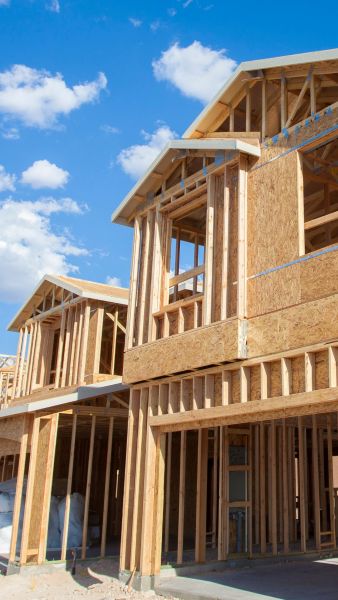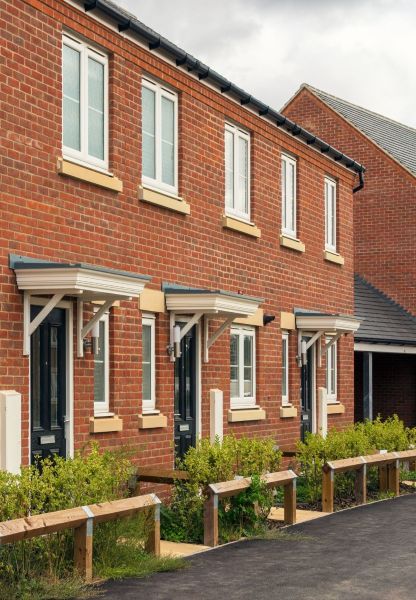
When TIME Magazine published the essay What’s Keeping Us from Fixing the Homelessness Crisis earlier this year, it reignited a nationwide debate over one of America’s most persistent challenges (and sparked a deep discussion among our Economic Development team). Author Jeff Hobbs argued that solving homelessness requires a “moral leap,” a collective willingness to act with compassion by creating shared, community-based housing solutions. While the vision was inspiring, it also raised difficult questions among our team of economic and community development professionals about what’s realistic, what’s missing, and how systems can work better to support families, individuals, and communities.
Our team discussion revealed perspectives from across the housing, economic development, and workforce development sectors, from those working directly with mayors and affordable housing developers to those managing workforce and social service partnerships. What emerged was a nuanced picture of how homelessness, housing affordability, and economic development are deeply connected, and why solutions must be local, layered, and practical.
The Complexity Behind Every Statistic
One of the most impactful parts of the TIME essay was its human story: a mother who kept her children enrolled in a good school district by living out of her car for five years. Her decision to maintain educational stability, sleeping in the driver’s seat while her children used the back seat as their “bedroom,” showed both courage and desperation.
Our collective experience suggests that the story reveals a tension between American ideals of mobility and self-reliance and the structural barriers families face. Many people experiencing homelessness are doing everything “right”—working, caring for their children, and trying to maintain stability—yet still fall through the cracks due to housing costs, lack of childcare, or fear of losing custody if they disclose their living situation.
The discussion highlighted an often-overlooked truth in policy debates: homelessness is not just a single condition but a spectrum of experiences. Families encounter very different obstacles than individuals do. Veterans, single fathers, seniors, or young adults aging out of foster care each face unique gaps in service availability.
Why Systems Still Fall Short
Through our national housing work, we’ve learned that despite good intentions, most communities are structurally unprepared to meet the full range of needs. Shelters often serve either families or individuals, rarely both. Many family shelters only accept women and children, leaving single fathers without safe options. Mental-health services are fragmented, and even when funding is available, projects can stall for years because of local opposition. Furthermore, communities that used plentiful funds through the American Recovery Act during the COVID pandemic to implement ambitious programs now face the reality that those funds are no longer available. They are now turning to local or regional philanthropy to fill these financial gaps. However, most foundations were not prepared to assume leadership roles in replacing federal dollars.
While supporting housing strategies nationwide, we recalled a food bank in Kentucky that received a major donation and city approval to add a shelter, but progress has been halted for three years due to community opposition. This situation is common. Even well-funded, carefully planned projects often collapse because of “Not in My Backyard” resistance. This dynamic reinforces inequality: homelessness services are frequently concentrated in lower-income neighborhoods, continuing cycles of poverty while preventing suburban families from accessing help without uprooting their children or jobs. Perhaps the most visible face of homelessness are encampments that are often cited as public safety threats to community well-being. A recent Supreme Court decision has accelerated the demolition of such encampments, while analysts and advocates have surfaced new claims of human rights violations as the homeless are displaced and redistributed.

The Economics of Housing and Work
At TPMA, we also understand the policy and economic factors involved, especially the growing push for “work requirements” linked to housing benefits. While connecting residents to employment is essential, we believe these mandates overlook the realities of mental health needs, childcare costs, transportation issues, and skills mismatches. Our experience shows that it’s difficult to ‘have it both ways.’ If we support a free-market economy, we must also recognize the importance of a social safety net that accounts for the fact that not everyone can join the labor market right away.
In that sense, workforce development and housing stability are interconnected. Without income growth that keeps up with housing costs, even working families risk becoming homeless. Affordable housing isn’t charity. It’s infrastructure. It supports employers, schools, and local economies just like roads and utilities do.

Glimmers of Progress
Despite the challenges outlined above, we remain optimistic. Recent federal changes to the Low-Income Housing Tax Credit, which increase allocations and allow greater investment from Fannie Mae and Freddie Mac, could lead to the creation of an estimated 2 million additional affordable housing units nationwide. While not a cure-all, this policy represents the first significant improvement in decades to one of the country’s most effective affordable-housing tools.
More importantly, communities are starting to see affordable housing as crucial economic infrastructure. Local economic development groups are working alongside housing authorities, developers, and human-services agencies to coordinate funding, find sites, and align incentives. This change acknowledges that stable housing supports workforce retention, educational success, and overall regional competitiveness.
Our Takeaway
The TIME essay succeeded in doing what great journalism should: sparking dialogue that bridges compassion and pragmatism. Our team was convinced that addressing homelessness requires more than empathy—it requires economic strategy. Housing isn’t an isolated social issue; it’s a core part of a functioning economy.
That’s why our firm collaborates with cities, counties, and regions across the country to develop housing and homelessness strategies that combine economic development, workforce development, and human services coordination. We assist communities in building partnerships, funding sources, and public support necessary to ensure every resident has a safe, stable place to call home.
If your community is exploring housing or homelessness solutions—from strategy development to funding alignment and implementation support—we’d love to help you take that next step.
